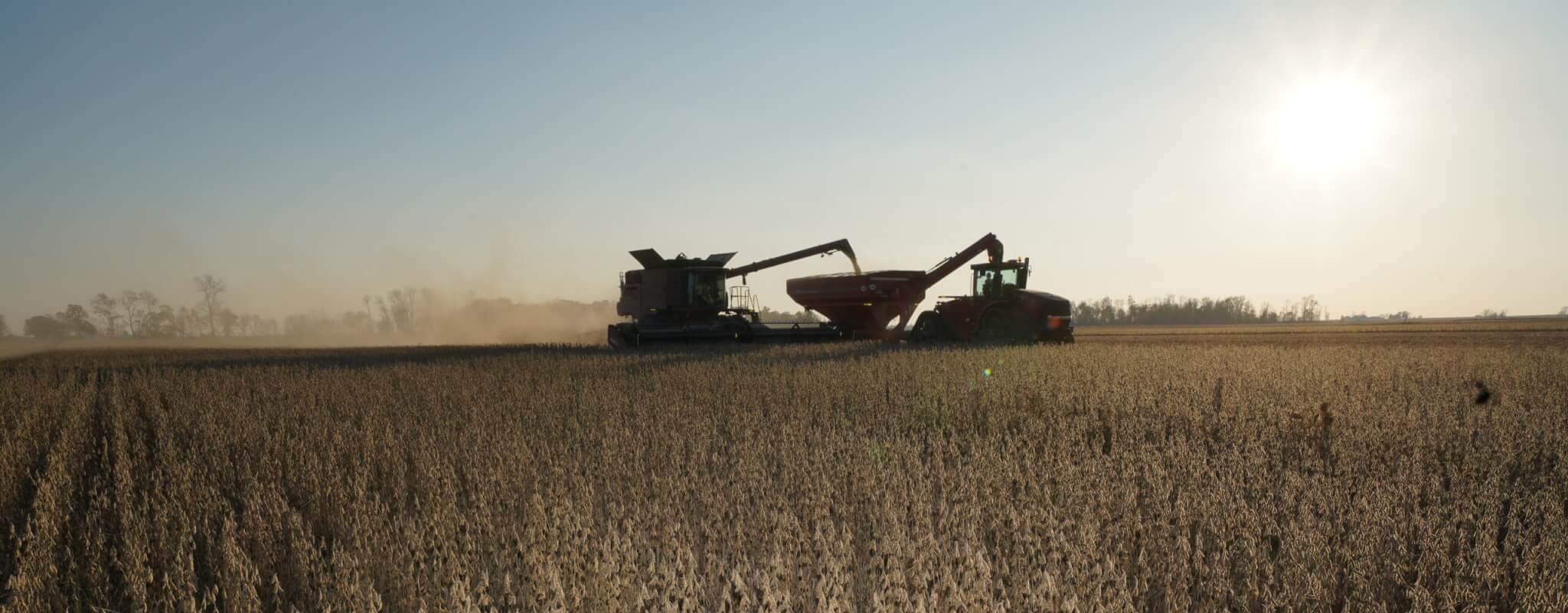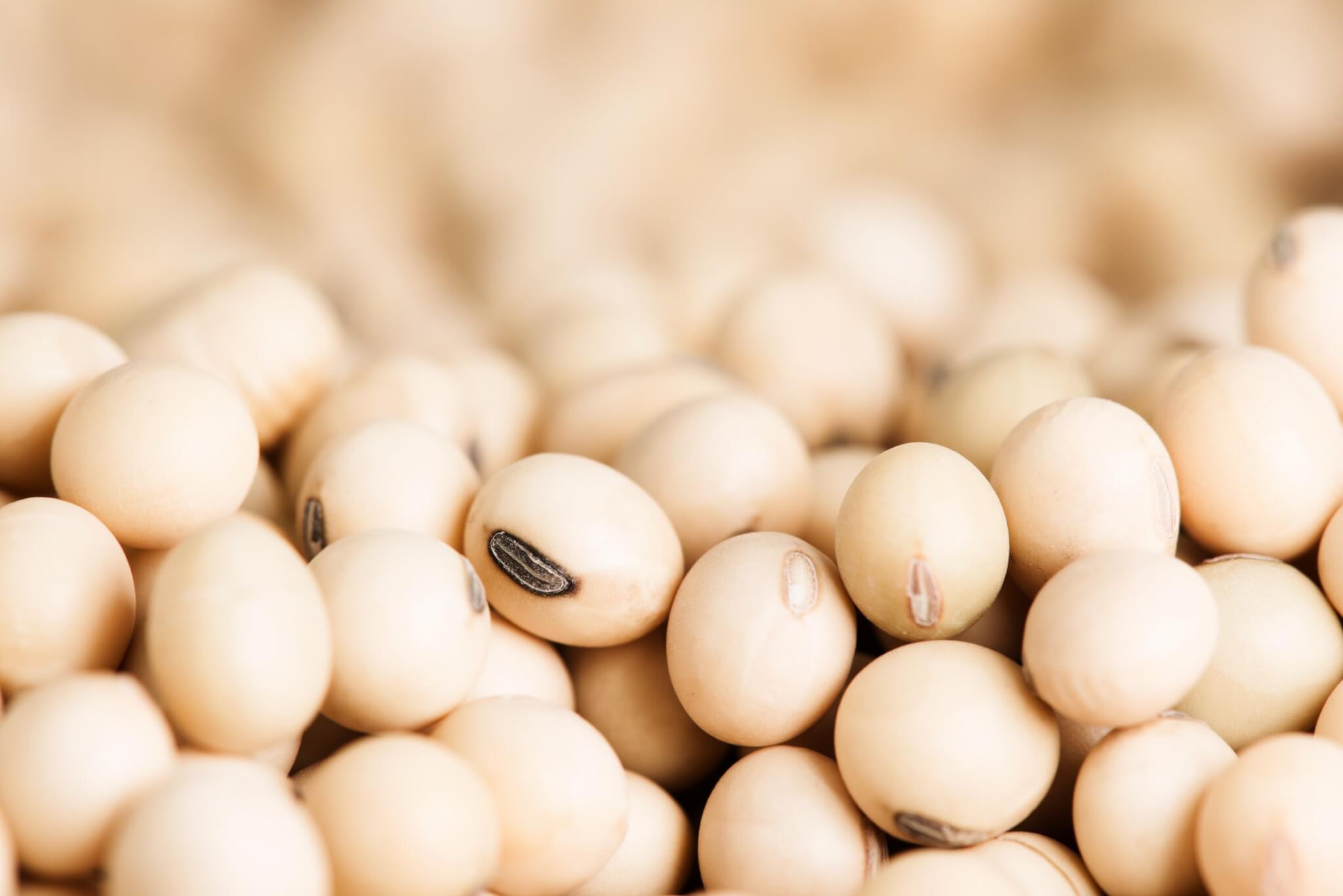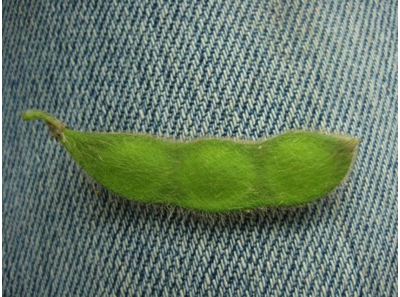Pale Green Soybeans Persisting?
We can often scout or drive past field after field of soybean in June that are pale green to yellowish in color. The soybeans look pitiful and plum pathetic. Soybeans are usually going through the awkward stage of life during June. They are growing faster than nitrogen can be supplied from soil (residual N and mineralization of organic matter), cotyledons, and developing nodules. Soybeans usually encounter this rapid growth and limited N supply between V2 to V3 growth stages (2 to 3 unrolled trifoliates). Soybeans in the picture below are encountering N limitation earlier (V1, one unrolled trifoliate) due to cool and wet conditions associated with heavy corn residue.
Soybean will take up N from the soil in addition to the nutrient supply from the cotyledons (~7 to 10 days as the seedling becomes established). Bradyrhizobium japonicum infect the root hairs of soybean to form nodules that will eventually fix atmospheric N. The infection occurs early, but the active fixation does not occur until V2 or so. Thus, the pale colored plants are a result of a temporary N shortage since the developing nodules aren’t at full speed and the plant is growing rapidly. Soybeans typically overcome this temporary shortage of N within 5 to 7 days, and supplemental N is not warranted.
Growing conditions (too wet as well as too dry) can intensify the N shortage. Cool and wet soil conditions, especially saturated soils, will limit oxygen supply to soybean roots and bacteria. Soybeans grow and develop by burning plant energy (photosynthates) with the assistance of oxygen. Thus, soybean (and rhizobia) growth is limited under wet conditions. In fact, nodules can die under prolonged saturation. On the opposite end of the spectrum, nodulation and N fixation of soybean are among the first plant processes hindered by very dry and high temperatures. A rejuvenating rain will activate nodulation and N fixation.
I have seen and heard many reports of persistent off-coloring of soybeans plus slow growth this season. Again, soybeans from V2 to V3 are typically pale green and recover from the N shortage within a week. However, it is not normal for soybeans to still be pale green for over 10 days or from growth stages V4 onward. I suggest digging up the plants in these fields to assess if the nodules are white, red, or dead. White nodules are immature, but developing. Red or pinkish interior of the nodules indicates that N fixation has started. Brown to mushy nodules are dead and will not supply N. Young soybeans, V2 to V3, may only have three to five actively-fixing nodules (pink to red interior). Soybeans from V4 and onward should have eight or more actively-fixing nodules with more nodules developing. Nutritional analyses of the most recent mature leaves of soybean will help to pinpoint if N or another nutrient is deficient.
Supplemental N may be warranted in severe cases, but you need to be certain that N is limited beyond the normal situations or the ponded areas. Forty to sixty pounds of N per acre has been beneficial in these situations provided it was applied between late vegetative growth (~V5) to early reproductive growth (R1). Please note, higher N rates can inhibit nodulation and fixation. Urea treated with a urease inhibitor is the preferred N source since UAN will damage foliage at these rates. You may also consider a blend of polymer-coated urea to provide a slow release of N until the nodules become active. Lower N rates applied foliarly will green-up soybeans, but will not supply enough N if nodulation is severely limited.
Slow soybean growth and/or persistent off-coloring could be caused by a number of factors. Cool and wet conditions (via growing season and/or heavy corn residue) limit soybean development (shoots, roots, and nodules), allow pathogen infections such as pythium to occur, and compromise soybeans ability to metabolize some herbicides. Limitations to root development will likely limit nodule development and thus, N supply.






